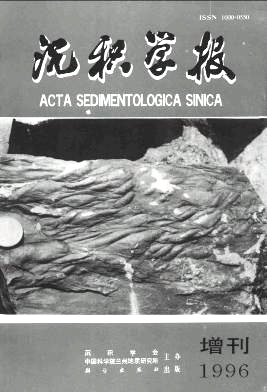The Characteristics of Cretaceous System in Baiwan Basin of Henan Province, China
- Received Date: 1996-02-05
- Publish Date: 1996-12-31
-
Key words:
- cretaceous /
- basin formation /
- geological characteristics
Abstract: The formation of Baiwan Basin, which is situated in Zhengping County of Henan Province, has been controlled by a strike-slip fault system formed by the relative movement of the Huabei Plate and the Yangtze Plate on their boundaries since Late Triassic. Under the action of a right-lateral shear strike-slip structure and controlled by a partial tensile stress, a series of "Z" -shaped Mesozoic pull-apart basins have been formed, of which Baiwan Basin,as a narrow but deeply-depressed rhombic structural basin, is bounded by faults on both the north and the south, and the basin formed in the second episode of the Yanshan movement.In this basin Baiwan Formation of the Lower Cretaceous (K1) is unconformed with the lower part (K2a), Gaogou Formation, of the Upper Cretaceous, but the fault contact occurs on both the top and bottom of the Cretaceous System. Baiwan Formation of the Early Cretaceous is set up according to its Ostracoda fossil assemblage, which is dominated by Cypridea,subordinated by Rhinocypris, and occasionally accompanied with Darwinula Legurninella and Clinocypris, basically identical to the Cyprtidea-dominated fossil assemblage of the Early Cretaceous in other terrestrial sedimentary basins of the world. Its spore-Pollen fossils are constituted by Classopllis-Schizaeois porites for the lower assemblage ; by Classopollis-Schizaeoisporites-Jugella-Cicatricosisporites for the upper assemblage. The species of these two assemblages are generally the same except for the obvious difference in their concentrations. In addition, both the assemblages contain the disputable angiosperm pollen. In China, there were at least two quite different spore-pollen florae, the Huabei and the Huanan florae, during the Early Cretaceous. Baiwan Formation belongs to the Huanan flora but with small amount of spore-pollen components of the Huabei flora, being characteristic of a transitional zone. and its age, therefore, should be the Early Cretaceous before Aptian. The lower spore-pollen assemblage corresponds to Berriasion-Valanginian while the upper one to HauteriveBarremian. The dominance of xerophytes in the spore-pollen florae suggests that the climate at thattime was rather dry, but the climate of the upper spore-pollen assemblage was relatively humid compared with that of the lower one.The Cretaceous profile in Baiwan Basin is about 600 m in thickness. In the early stage of the lower Cretaceous, shore was flat due to weak fault and subsidence and the deposit system was dominated by alluvial fan - flood braided plain -shore and shallow labe; in the middle stage stronger fault and subsidence made shore steep, lake area enlarged and water body deepening. The deposit system became to fan delta-shallow lake and deeper lake. The alluvial fan consists of a suite of dark-brown and grey-white psephyte and psephytic compound sandstone and gravels are randomly distributed with the diameter ranging from 20cm to 1cm. The flood braided plain facies is composed of brown-red mudstone and sandy mudstone intercalat homochromatic psephytic compound sandstone. The fan delta is identical to alluvial fan in lithology except for the grey-green and grey-yellow color due to the submarine deposition.The psephyte contacts directly with green-grey and dark-grey paper-like shale and laminated marl of lake factes, constituting a 100m interbedding, and the latter belongs to a deeper lake factes, thus this suite of psephyte is regarded as a fan delta facies. The shallow lake facies of this profile is made up dominantly of grey-green and yellow-green mud shale intercalated with marl-bearing lenticular mud shale and laminated marl while the deeper lake factes contains dark-grey and dark-green paper-like, lamellar and medium-bedded marl interbedding with pyrite strip. This kind of marl is mainly controlled by a deep-water sedimentary environment, and secondly associated with relatively dry climate. It can be seen from the outcrop of the profile that secondary carbonate, filled in along the joint of mud shale and marl,has been weathered into beautiful honeycomb struc.
| Citation: | Huang Xingzhen, He Mingxi, Li Zhenxi, Shao Hongshun, Tuo Jincai, Hakuyu Okada, Takashi Sakai, Kazutoyo Chijiwa. The Characteristics of Cretaceous System in Baiwan Basin of Henan Province, China[J]. Acta Sedimentologica Sinica, 1996, 14(S1): 38-48. |






 DownLoad:
DownLoad: